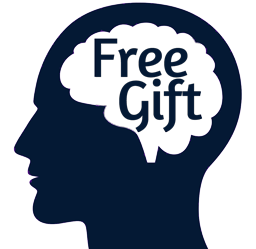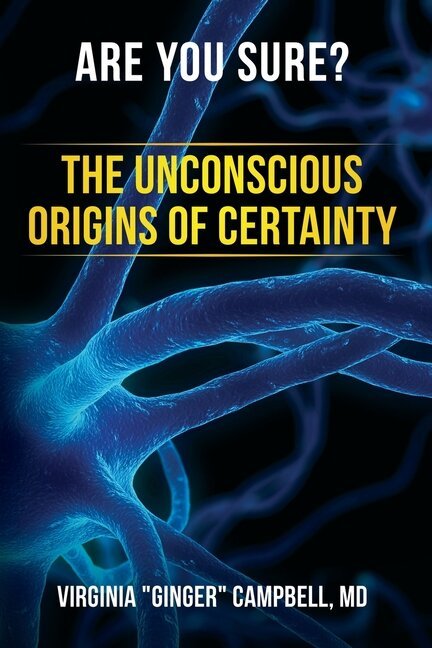Excerpt from BS 196 with Hakwan Lau
Closing Remarks by Dr. Campbell
First, I want to thank Hakwan Lau for taking the time to talk with us about his new book, In Consciousness we Trust: The Cognitive Neuroscience of Subjective Experience. This book is really aimed at workers and students in the field of consciousness research. So, I think it's important to emphasize this interview provided a very superficial overview of Lau's work.
Every month, I remind critical listeners to read the entire book. I don't expect most of you will feel compelled to do this, but you should if you're interested in working in this field. Those of you who are longtime listeners, no doubt, realize that many of Lau's viewpoints differ significantly from many previous guests.
So, I'm going to take a different approach to this episode summary. I will start with a summary of the key ideas that Lau shared, but I will also contrast his ideas with several other approaches. I will try to be very clear when I'm expressing my personal opinion.
One overriding theme of Lau's book is to take a critical stance toward the current state of consciousness studies as a scientific discipline. On Brain Inspired, Lau complained that there are too many theories, and in his book, he complains that the media inflates the importance of certain theories because they are championed by established authorities.
One of his main targets is panpsychism, which I won't have time to talk about in this summary. The logic of the interview was intended to follow the structure of his book. So, he started out by talking about the fact that he sees most theories as variations on two main extremes: global approaches and localist approaches.
An extreme local view places subjective experience in the sensory cortex while the well-known global workspace theory says that consciousness requires a widespread broadcast of information. Of course, there's no one who currently says that this requires the entire cortex, which would be the logical opposite of the extreme localist view.
However, Lau's main point is that neither view accounts for all the experimental data, which he says implies the need for a more centrist view. He proposes what he calls the perceptual reality monitoring theory (PRM for short), which is an example of a higher order theory of consciousness, because it involves hierarchal information processing.
The key point he made in the interview was the proposal that reality monitoring is the mechanism by which we get subjective experience. Not that consciousness is reality monitoring, consciousness is subjective experience. But his proposal was that if you look into the brain mechanisms, the processes that give you subjective experience, turn out to be the circuits for reality monitoring.
To be perfectly honest, I did not find his argument persuasive. I can see how reality monitoring is important to metacognition, and even to our ability to know the difference between real time experience and imagination. But my biggest problem with Lau’s approach is that not only does it fail to explain the qualitative nature of conscious experience, but it also restricts consciousness to a limited number of mammals.
And this is not because he accepts LeDoux’s argument that we can't know if animals are conscious, but because he limits consciousness to animals that appear to have the necessary cortical circuitry to implement his perceptual reality monitoring.
I invited Lau onto Brain Science not because I agree with everything he said, but because I want to provide a sense of the diversity of voices among those who are trying to understand how the brain generates consciousness.
The one thing that all my guests have in common, is that they believe that consciousness requires the brain and that it is a legitimate area of scientific endeavor.
Lau is quite critical of the work of others in the field. Such criticism is an important part of any scientific endeavor. If your theory doesn't stand up to the withering criticism of other scientists, you should not be sharing it with the rest of the world.
One important point he made was that experimental confounders are always a challenge. Let me give you a real-life example of a confounder: When the Omicron variant of COVID emerged, there were widespread claims that it was less virulent. However, given that it arose in the context of vaccination, this claim was dubious from a scientific standpoint.
Subsequent statistical analysis has supported what many clinicians suspected all along: Omicron was only less severe among vaccinated people. Vaccination is an example of a confounder that needed to be considered.
In his book, Lau emphasizes two other points about confounders. One is the importance of recognizing them and the second, is the importance of converging evidence. This means that if you have several different experimental approaches with different confounders and they converge on the same conclusion, it helps overcome confounders that can't be removed.
I hope the example I gave you from medicine can give you a better sense of why recognizing confounders is so important. In his book, this seems to be one of Lau’s primary arguments against global neuronal workspace theory.
His take on Dehaene’s work does not always match what I took away from reading Dehaene’s book, Consciousness and the Brain: Deciphering How the Brain Codes Our Thoughts, which I describe briefly in episode 160. But I would rather concentrate on several bigger issues.
One, is that all the theories considered by Lau are what Mark Solms, who I interviewed in episode 184 would call cortical-centric. This may be why he has difficulty incorporating both the qualitative aspect of consciousness and emotions.
Antonio Damasio has famously come around to accepting the late Jaak Panksepp’s claim that both emotion and consciousness begins subcortically. This has huge implications for answering the question of which non-human animals are conscious.
I refer you back to episode 128 when I talked with the co-author of a book called The Ancient Origins of Consciousness, which argued that all vertebrates and maybe even insects, have primary sensory consciousness.
Obviously, this is beyond the scope of today's episode, but it should be noted that even those who restrict the possibility of consciousness to mammals are beginning to recognize the role of subcortical circuits.
The other objection I have to Lau's approach is his functionalism. He never acknowledges the role of the embodied cognition movement. This contrast sharply with his contemporary Anil Seth, who was interviewed last year in episode 188.
I have no allegiance to any particular theory of consciousness, but based on my reading, a credible theory must include findings from outside the narrow confines of consciousness studies. It must accommodate the evidence that many processes that were once considered conscious, for example, visual processing, are largely unconscious.
Maybe there isn't such a sharp divide between consciousness and other brain processes like we once assumed. A credible theory must also include the role of embodiment and the fact that emotions are fundamental to having subjective experience. These ideas also impact the questions that appear at the end of almost every book about consciousness. Are animals conscious? Could computers become conscious?
It is extremely rare for me to criticize the position of my guest, but I hope that given how openly Lau criticizes his colleagues, he will not be offended. I do not claim to keep up with all the literature in this or any other subfield of neuroscience. I rely on academic texts to give me an overview of the current issue.
With that in mind, I highly recommend In Consciousness we Trust: The Cognitive Neuroscience of Subjective Experience to students and anyone else working in the field.
I'd love to hear your feedback about this episode. You can write to me at brainsciencepodcast@gmail.com. Especially if you are new to Brain Science, I recommend going to brainsciencepodcast.com for the complete show notes and episode transcript.
In the show notes, I have listed some key references from Lau's book, as well as a partial list of previous episodes of Brain Science about consciousness. I particularly recommend episode 160 through 163 for detailed overview of current theories about consciousness.
Click here to buy full transcript for $4
Episode transcripts are provided to Premium subscribers and Patreon supporters: click here to learn more.



















